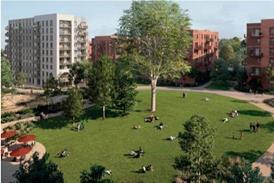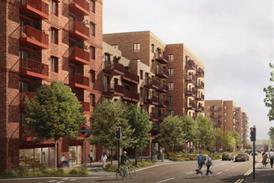Chloë Phelps welcomes new funding commitments for housing, but warns we also need urgent reform of procurement and planning processes

For those of us working in affordable housing, the government’s recent spending review is definitely a good news day. And those have been rare in recent years. After more than two decades of crisis, underinvestment and broken promises, the announcement of a ten year Affordable Homes Programme feels like a turning of the tide.
The £39 billion commitment nearly doubles previous levels of investment and, importantly, introduces a genuinely new pot of money rather than just a repackaging of old commitments.
It has the potential to lay the foundations for long-term planning and delivery and sets a welcome precedent: that housing is critical national infrastructure and deserves multiyear funding.
Alongside that, the ten year social housing rent settlement, capped at CPI plus one per cent from 2026, provides much needed financial certainty for providers. It is backed by a consultation on reintroducing rent convergence, something many of us in the sector have been calling for over years of inconsistent policy and stalled delivery.
There was also increased funding for schools, infrastructure and transport, all vital if we are serious about building real communities and not just housing units. And the Treasury’s changes to the Green Book are a big shift in principle. Moving away from rigid benefit-cost ratios towards place-based business cases opens the door for better strategic thinking about homes, services and infrastructure across different areas.
But we must also acknowledge the compromises that have come with this package.
One particularly short-sighted move is the reduction in funding for Level 7 apprenticeships. The proposed age cap of 21 would make architecture apprenticeships, one of the few genuinely accessible routes into our profession, much harder to pursue. It risks narrowing the pipeline of future talent and shutting out those from less privileged backgrounds.
Architectural practices, especially SMEs, are losing tens of thousands of pounds each year responding to overlong, inconsistent, and often undeliverable briefs
As Alan Wright at BPTW put it: “Ultimately the lack of funding will have a negative impact on the industry and affect the capability of practices like ours to help deliver the homes that are needed. Far from boosting opportunities for young people wishing to pursue a career in architecture, these reforms will have a massive impact that adversely affects those from less well-off backgrounds and mean that a career in architecture is only accessible for a privileged few.”
There are cuts, too, to environmental funding. The Department for Environment faces reduced resources, and programmes such as tree planting and support for low-intensity agriculture have been deprioritised.
For a government that claims to be investing in future-proof communities, this feels like a backwards step.
Both of these decisions highlight the urgent need for architects and built environment professionals to be brought into policy conversations early and meaningfully. Without that, well-intentioned reforms risk pulling in contradictory directions, setting up future delivery problems rather than solving the ones we already have.
So where do we go from here? If we are serious about delivering 1.5 million new homes, and not just approving them on paper, there is still an enormous gulf to cross.
First, we need to tackle procurement. As I argued last year in BD, public sector tendering remains one of the most costly and inefficient barriers to delivery.
Architectural practices, especially SMEs, are losing tens of thousands of pounds each year responding to overlong, inconsistent, and often undeliverable briefs. Local authority officers are likewise overstretched and trying to deliver projects in an increasingly complex operating environment.
We need a procurement system that is faster, clearer and more proportionate. That means shared, standardised brief templates, properly scoped projects with viable budgets, and smarter use of digital tools to cut waste. We also need clearer expectations.
If a project cannot pass a basic risk threshold, it should not be put to tender. Procurement reform is not just an industry ask, it is a necessity if we are to deliver on the promises made in this spending review.
To realise the full potential of this investment, government must now work with us to reform the systems that sit underneath it, including procurement, delivery structures, planning and regulation
Second, we need to close the gap between new build, retrofit and maintenance. These funding streams still operate in siloes, and asset management teams across councils and housing associations remain chronically underfunded. That is not sustainable. Looking after what we already have is just as important as building more.
We also need clarity on the government’s vision for what new housing is supposed to achieve. It cannot just be about numbers. If we are investing £39 billion, let us make sure we are building homes that allow people to live healthy, happy, sustainable lives.
That means good design, not just beautiful facades but spaces that are efficient, flexible and robust over time. Good design does not need to cost more. But it does need to be baked in early and supported through planning, briefing and procurement processes.
Finally, there is the Building Safety Regulator. While safety must be paramount, the current system is too often opaque, slow and inconsistent. Too many projects are being held up unnecessarily. Reform here is essential to ensure that delays are not undermining delivery and damaging public confidence.
The spending review is a strong step forward. The ambition is there, and some of the big structural changes we have been calling for, such as more funding and a longer-term approach to investment, are beginning to take root. But we cannot afford to waste this opportunity.
To realise the full potential of this investment, government must now work with us to reform the systems that sit underneath it, including procurement, delivery structures, planning and regulation. This is about more than bricks and mortar. It is about how we build a fairer, greener and more liveable country for everyone.
Let us make it easier to do the right thing.
















1 Readers' comment